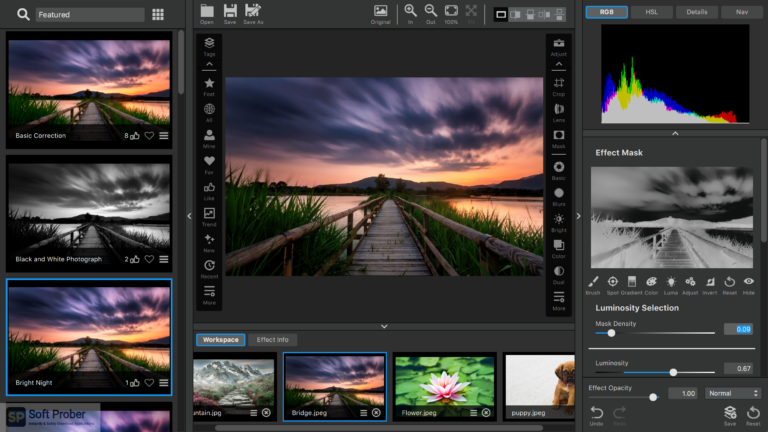
- #DIFFERENCE BETWEEN TOPAZ STUDIO AND TOPAZ PLUGINS UPDATE#
- #DIFFERENCE BETWEEN TOPAZ STUDIO AND TOPAZ PLUGINS FULL#
- #DIFFERENCE BETWEEN TOPAZ STUDIO AND TOPAZ PLUGINS PRO#
- #DIFFERENCE BETWEEN TOPAZ STUDIO AND TOPAZ PLUGINS SOFTWARE#
If this noise level of the photo was high enough that I would normally run it through noise reduction, I ran it through DeNoise AI first (as is suggested by Topaz).
#DIFFERENCE BETWEEN TOPAZ STUDIO AND TOPAZ PLUGINS FULL#
The Vega 64 eGPU rendered previews around 6% faster than using just the MacBook Pro.Ī much larger result can be seen when processing the full image, with an average of about 11 seconds being saved per image (28% improvement).įor the Sharpen AI test I chose a selection of 10 images containing varying levels of detail taken at various ISO settings.
#DIFFERENCE BETWEEN TOPAZ STUDIO AND TOPAZ PLUGINS UPDATE#
This ensured that each GPU was doing the same amount of work between the two tests.Īverage time taken to update the preview image:Īverage time taken to fully process the image:įrom the results above you can see that the time taken to render the preview image does not significantly change with the addition of an eGPU.
#DIFFERENCE BETWEEN TOPAZ STUDIO AND TOPAZ PLUGINS PRO#
For the preview timings I set the zoom level to 100% and made sure I was looking at the same portion of the image for both the bare MacBook Pro and the MacBook Pro + eGPU options. I then set the sliders in DeNoise AI to the optimal setting for each image (I rarely rely on the default suggestions).

#DIFFERENCE BETWEEN TOPAZ STUDIO AND TOPAZ PLUGINS SOFTWARE#
To test the Topaz Labs noise reduction software I chose 10 images taken between ISO1600 and ISO6400. This turned out to be the correct choice as forcing the MacBook Pro to use the internal 560x slowed down the process by over 200% when compared to using the CPU to process images. Interestingly, the Topaz software didn’t automatically select the Radeon 560x when doing these tests without the eGPU attached, instead opting to use the CPU. The timer was started for each test as soon as either the ‘Update Preview’ or ‘Process Image’ button was pressed and stopped when the progress window was complete. I kept the workflow exactly as I would when processing images normally. The Screen is connected directly to the graphics card in the eGPU setup.Īll of the image processing was done on the attached external display.Īll RAW images chosen for the test were opened in Capture One Pro and adjustments applied before being sent as a 16-bit TIFF file to Topaz Studio 2 where the tests were then performed.

Razer Core X with Vega 64 Graphics Card connected to the MacBook Pro via Thunderbolt 3. (All Photo files used were located on this drive)ĭell 27″ 2560×1440 Monitor connected to MacBook Pro via Caldigit TB3+ Dock. I recently took possession of an eGPU in the way of a Razer Core X enclosure and an ASUS ROG Vega 64 Strix graphics card so will be testing those with my 2018 MacBook Pro that I use for my photo editing.Ĭlick below if you want to jump straight to a particular applicationĪs I am testing my real-world experience here I performed all tests on the hardware that I use in my daily photo processing workflow:ħ200rpm External HDD connected via Thunderbolt 3 dock. This article will discuss the use of an eGPU to potentially speed up the Topaz Labs AI powered software.Īrtificial Intelligence driven noise reduction, sharpening and resize toolsGo! This allows for much stronger GPU performance. With the introduction of Thunderbolt 3 connections on modern laptops it is now possible to connect an external graphics card (eGPU). Unfortunately for most laptop users, the GPU inside a laptop is usually quite weak when compared to what can be found inside a desktop computer. When a powerful enough graphics card is present in the Computer, the AI processing can be offloaded to the GPU (specifically an eGPU in this case) to reduce processing times.


In order to process an image using AI models the software requires some serious processing power to run. Topaz Labs have recently released some Artificial Intelligence driven image editing tools that can produce some very good results in the areas of Noise Reduction, Sharpening and Image Upsizing. We investigate how much faster the Topaz AI photo processing products can be. TOPAZ AI SOFTWARE - DOES AN EGPU MAKE A DIFFERENCE?Īn external GPU (eGPU) can boost the graphics power of your laptop. Topaz AI Software – Does an eGPU make a difference?


 0 kommentar(er)
0 kommentar(er)
